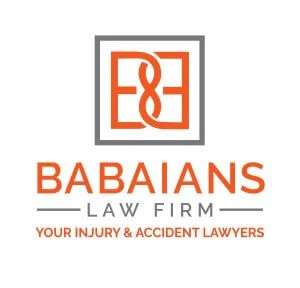
Generally, you have two years from the date of the injury to file a claim, but that’s not always the case. Understanding the nuances of how long you have to file a Glendale catastrophic injury claim is important to guarantee you don’t miss your window of opportunity.
At Babaians Law Firm, we understand the importance of meeting deadlines in personal injury cases. To get started, consider consulting with a Glendale catastrophic injury lawyer who can provide you with personalized guidance and support throughout the legal process.
California Statute of Limitations
When dealing with a catastrophic injury claim in California, it’s important to keep in mind the state’s statute of limitations, which sets a time frame for filing your claim. You’ll need to act quickly, as California laws impose strict filing deadlines that can profoundly impact the outcome of your case.
You typically have two years from the date of the injury to file a catastrophic injury claim. This time frame applies to most personal injury cases, including those involving catastrophic injuries such as spinal cord injuries, traumatic brain injuries, and amputations.
For a free legal consultation, call (818) 334-2981
Government Claims and Notices For Filing a Catastrophic Injury Claim in Glendale
When you’re filing a catastrophic injury claim in Glendale against a government entity, you’ll need to follow specific procedures to guarantee your claim is valid. You’ll need to file a government claim, which typically involves submitting a notice of intent to file a claim, and you’ll need to do so within the statute of limitations.
Filing Government Claims
Time is of the essence when dealing with catastrophic injuries, and handling government claims can be a formidable task. As you go through the process, it’s important to understand the specific requirements for filing government claims.
When filing a claim against a government entity, you’ll need to comply with specific rules and deadlines. This may include filing a Federal Claim under the Federal Tort Claims Act or pursuing a claim against a local government entity, such as a city or county, under Municipal Liability laws. Here’s what to do:
- Identify the correct government entity responsible for your injury.
- Determine the specific statute of limitations for filing your claim.
- Gather and document evidence to support your claim.
- Complete and submit the required claim forms.
- Be prepared to negotiate or litigate your claim if necessary.
Notice of Intent
Filing a Notice of Intent is a precursor to submitting a formal government claim. It provides the responsible entity with official notification of your intention to pursue damages for your catastrophic injury.
You’ll need to file your Notice of Intent within a specific timeframe, typically within 45 days of your injury. This filing deadline is important, as missing it may result in your claim being rejected.
Remember to send your Notice of Intent to the correct entity, whether it’s a city, county, or state agency. You can usually find this information on the entity’s website or by contacting them directly.
Statute of Limitations
You must be aware of the statute of limitations, which dictates the timeframe within which you can submit your government claim. This timeframe is important, as it sets the deadline for filing your catastrophic injury claim. Failure to file within this timeframe may result in your claim being denied or dismissed.
The statute of limitations for government claims varies depending on the entity responsible for the injury.
- Typically, six months to one year: The standard timeframe for filing a government claim against a city, county, or state agency.
- Tolling: In some cases, the statute of limitations may be paused or “tolled” if the injured person is a minor or incapacitated.
- Exceptions: There may be exceptions to the statute of limitations, such as in cases of fraud or concealment.
Minors and Exceptions to Rules for Glendale Catastrophic Injury Claims
When a minor suffers a catastrophic injury, their legal guardians or representatives must handle the claims process on their behalf. In such cases, the statute of limitations is tolled, meaning it does not start running until the minor turns 18.
You’ll need to handle the legal process, including settlement negotiations, to secure fair compensation for your child’s injuries. It’s important to work with an experienced attorney who has handled catastrophic injury claims involving minors.
Keep in mind that the rules for minors apply to all individuals under the age of 18, including those with disabilities. If your child has a developmental disability, the statute of limitations may be extended further.
Click to contact our personal injury lawyers today
The Discovery Rule and Tolling in Glendale
Catastrophic injury claims often involve timelines, and the discovery rule plays a role in determining when the statute of limitations begins. This rule states that the statute of limitations starts running from the date you discover, or should have reasonably discovered, the injury or its cause.
In your catastrophic injury claim, the discovery rule can work in your favor or against you, depending on the circumstances. You’ll need to understand how it applies to your case to determine how long you have to file a catastrophic injury claim in Glendale. Some common situations include:
- The discovery rule can delay the statute of limitations if the injury was not immediately apparent or if there were medical exceptions that prevented you from discovering the injury earlier.
- Delaying can also occur due to legal obstacles, such as a defendant hiding evidence or misleading you about the cause of the injury.
- If you’re unaware of the extent of the injury or the responsible party, the discovery rule can give you more time to file your claim.
- The rule applies to both physical and emotional injuries, including those resulting from medical malpractice or product liability.
Complete a Free Case Evaluation form now
Learn More About How Long You Have to File a Catastrophic Injury Claim in Glendale
At Babaians Law Firm, we recognize the importance of meeting these deadlines. We are committed to helping you understand how long you have to file for your catastrophic injury claim in Glendale. Our experienced attorneys will work with you to determine the applicable deadline and ensure that your claim is filed promptly.
Contact us today for a free consultation.
